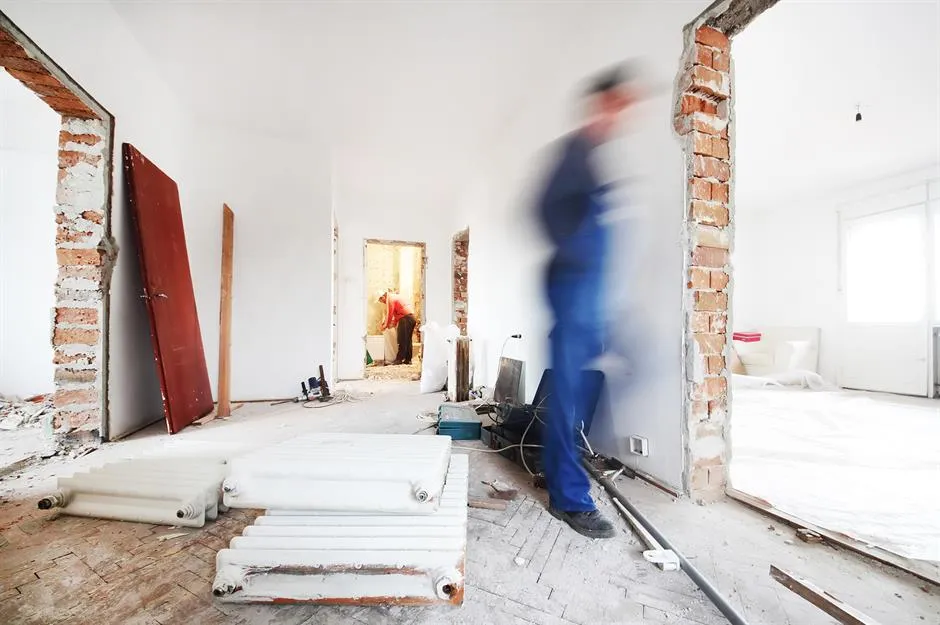Home improvement projects hold the promise of transforming your living space into a dream home, but they can also be fraught with challenges. Missteps along the way can lead to costly fixes and frustration. This guide aims to highlight ten common home improvement mistakes and provide you with practical tips to avoid them, ensuring your projects go smoothly and successfully.
Mistake #1
Inadequate Planning Diving into a project without a solid plan is like setting sail without a map. Without a clear roadmap, you might find yourself lost amidst delays and unexpected costs. Start by defining your project’s scope, creating a realistic timeline, and setting a detailed budget. Remember, thorough planning is the cornerstone of any successful renovation.
Mistake #2
Ignoring Building Codes and Permits Overlooking the importance of building codes and permits can lead to hefty fines and even force you to undo your hard work. Always check local regulations before starting your project. Reach out to your local building authority to ensure you’re compliant, and if necessary, obtain the required permits. It might seem tedious, but it’s crucial for avoiding legal issues down the line.
Mistake #3
Skimping on Quality Materials Choosing cheap materials to save a few bucks can backfire, leading to subpar results and frequent repairs. Investing in high-quality materials pays off in the long run, offering durability and better aesthetics. Research materials that best suit your project and remember that quality often correlates with longevity and overall satisfaction.
Mistake #4
Underestimating Costs Budgeting for a home improvement project can be tricky, and it’s easy to underestimate expenses. Common errors include overlooking small costs that add up and failing to account for unexpected issues. To avoid financial surprises, build a buffer into your budget—typically an extra 10-20%—to cover unforeseen expenses.
Mistake #5
Overestimating DIY Skills DIY projects can be immensely rewarding, but they also require a realistic assessment of your skills. Overestimating your abilities can lead to botched jobs and costly repairs. Be honest with yourself about what you can handle, and don’t hesitate to hire professionals for tasks that are beyond your expertise. Sometimes, spending money on a pro saves you from bigger expenses later.
Mistake #6
Neglecting Safety Precautions Home improvement projects can be hazardous if safety isn’t a priority. Common risks include electrical hazards, falls, and exposure to harmful substances. Equip yourself with essential safety gear—gloves, goggles, and masks—and follow safety protocols diligently. A safe work environment not only protects you but also ensures smoother project completion.
Mistake #7
Improper Measurement One of the simplest yet most impactful mistakes is inaccurate measurement. A wrong measurement can throw off your entire project, wasting time and materials. Use reliable measuring tools, double-check your measurements, and measure twice before making any cuts. Precision is key to a flawless finish.
Mistake #8
Overlooking Prep Work Proper preparation is often the unsung hero of successful home improvement projects. Skipping prep work might save time initially but can lead to poor results and increased effort later. Whether it’s cleaning surfaces, sanding, or applying primer, thorough prep work ensures the quality and durability of your improvements.
Mistake #9
Not Considering Home’s Style and Value While it’s exciting to personalize your space, it’s crucial to consider your home’s existing style and overall value. Mismatched renovations can look out of place and potentially decrease your home’s market value. Aim for improvements that enhance and harmonize with your home’s architecture, ensuring they add value both aesthetically and financially.
Mistake #10
Neglecting Maintenance After Improvements Completing a home improvement project is gratifying, but maintenance is essential to preserve your hard work. Regular upkeep prevents minor issues from becoming major problems. Develop a maintenance schedule to keep your improvements in top shape, ensuring they remain functional and beautiful for years to come.
Final Words
Embarking on a home improvement project is an exciting venture, but avoiding these common mistakes can make the difference between success and frustration. Careful planning, adherence to regulations, and attention to detail will pave the way for smoother projects and more satisfying results. As you take on your next renovation, remember these tips and share your own experiences and insights with fellow DIY enthusiasts.
FAQ’s
Why is planning so important for home improvement projects?
Planning is crucial because it helps define the project’s scope, sets a realistic timeline, and establishes a detailed budget. Proper planning minimizes delays, unexpected costs, and other frustrations that can derail a project.
Do I really need to get permits for small home improvements?
Yes, obtaining the necessary permits, even for small projects, ensures that your work complies with local building codes and regulations. This helps avoid fines, legal issues, and potential safety hazards.
Is it worth investing in high-quality materials for my renovation?
Absolutely. While high-quality materials may have a higher upfront cost, they are more durable and aesthetically pleasing, leading to better long-term results and fewer repairs or replacements.
How can I accurately estimate the cost of my home improvement project?
To estimate costs accurately, research and list all expenses, including materials, labor, and unexpected contingencies. Adding a buffer of 10-20% to your budget helps cover unforeseen costs that may arise during the project.
What are some essential safety precautions for DIY home improvement?
Essential safety precautions include wearing protective gear (gloves, goggles, masks), following safety protocols for tools and materials, ensuring proper ventilation, and being aware of electrical and structural hazards. Always prioritize safety to prevent accidents and injuries.
